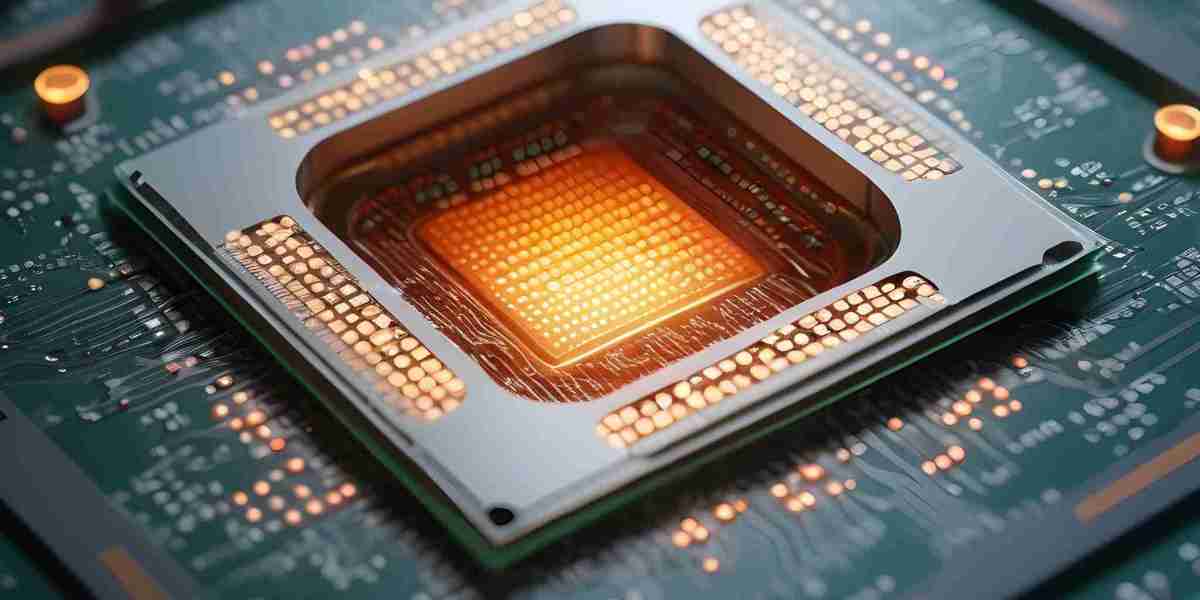The compound semiconductor market holds immense potential to redefine the performance boundaries of modern electronics, power systems, and communication technologies. Unlike traditional silicon-based semiconductors, compound semiconductors—comprising materials like gallium nitride (GaN), silicon carbide (SiC), and gallium arsenide (GaAs)—enable faster switching, higher energy efficiency, and operation under extreme conditions, making them ideal for emerging high-demand applications.
As industries move toward digitization, electrification, and decarbonization, the potential of compound semiconductors is becoming increasingly evident. This article explores the vast opportunities this market presents and the sectors poised to benefit most from its capabilities.
Revolutionizing Power Electronics
One of the most promising areas where compound semiconductors are unlocking significant value is power electronics. In systems where energy conversion and efficiency are critical—such as in electric vehicles (EVs), industrial automation, and renewable energy—SiC and GaN components are replacing traditional silicon due to their ability to handle higher voltages, frequencies, and temperatures.
SiC-based power devices are transforming electric drivetrains, enabling EVs to achieve longer ranges, faster charging times, and improved energy management. Meanwhile, GaN transistors are gaining popularity in consumer power adapters, server power supplies, and telecom base stations for their compact size and energy-saving advantages.
The potential to revolutionize how electricity is managed and utilized across industries puts compound semiconductors at the heart of the power electronics evolution.
Transforming Wireless Communication Infrastructure
With the global expansion of 5G and upcoming 6G networks, compound semiconductors are set to play an increasingly critical role in wireless infrastructure. GaN and GaAs components offer excellent high-frequency performance, making them essential for RF front-end modules, satellite communication, and microwave transmission systems.
The high electron mobility of these materials allows faster signal processing and better energy efficiency—attributes crucial for supporting massive data loads and ultra-fast connectivity.
As network providers continue deploying new technologies, the potential for compound semiconductors to dominate next-generation communication systems grows significantly, paving the way for smart cities, autonomous vehicles, and real-time data streaming.
Driving Sustainability Through Green Technologies
The move toward sustainability is opening up further possibilities for compound semiconductors. In renewable energy systems, such as solar inverters and wind power converters, these materials enhance power conversion efficiency and thermal management, reducing energy waste and operational costs.
Moreover, their durability and reliability make them ideal for grid-connected storage systems, ensuring stability and performance even in fluctuating environmental conditions.
As global energy policies increasingly emphasize low-carbon technologies, the demand for energy-efficient and high-performance semiconductors is expected to skyrocket, with compound materials leading the charge.
Empowering Next-Generation Consumer Electronics
In the consumer electronics sector, compound semiconductors are driving innovation by enabling thinner, faster, and more efficient devices. Whether it’s high-resolution displays, wireless chargers, AI processors, or augmented reality (AR) devices, these semiconductors provide the power and speed needed for advanced features and smooth user experiences.
The potential to enhance everything from battery life to processing speed makes compound semiconductors a critical component in the evolution of smart devices, wearables, and digital entertainment platforms.
Enhancing Safety and Intelligence in Automotive Systems
The automotive sector is rapidly evolving, and compound semiconductors are at the core of this transformation. Beyond powertrains, these materials are now being used in advanced driver-assistance systems (ADAS), lidar, and radar sensors for collision detection and navigation.
Their reliability and ability to operate under harsh conditions make them ideal for safety-critical systems in autonomous and semi-autonomous vehicles. As the industry pushes toward smarter, more efficient mobility solutions, the role and potential of compound semiconductors will only continue to expand.
Opportunities Across Industrial and Defense Applications
In industrial automation, robotics, and aerospace and defense, compound semiconductors are used in sensors, control systems, and high-frequency radar. Their high durability, thermal stability, and performance at extreme frequencies make them vital for mission-critical operations.
As these sectors increasingly demand compact, efficient, and high-reliability components, compound semiconductors offer the solution, supporting applications from factory robotics to military-grade radar and communications.
The Road Ahead: Investment and Innovation
The compound semiconductor market’s potential is not limited to applications—it also lies in the wave of investments, innovation, and strategic collaborations emerging globally. Manufacturers are investing in capacity expansion, vertical integration, and material science research to reduce production costs and improve scalability.
Startups and established players alike are exploring GaN-on-silicon technology, wafer scaling, and 3D integration, which promise to unlock new performance benchmarks while expanding the reach of compound semiconductors into mass-market products.
Conclusion
The compound semiconductor market potential is vast and growing. As demand surges across sectors—from EVs and renewable energy to 5G networks and consumer electronics—these advanced materials are poised to become foundational to next-generation technologies.
With superior electrical characteristics, growing investment, and wide applicability, compound semiconductors are more than a future trend—they are a critical enabler of global progress in performance, efficiency, and innovation.




